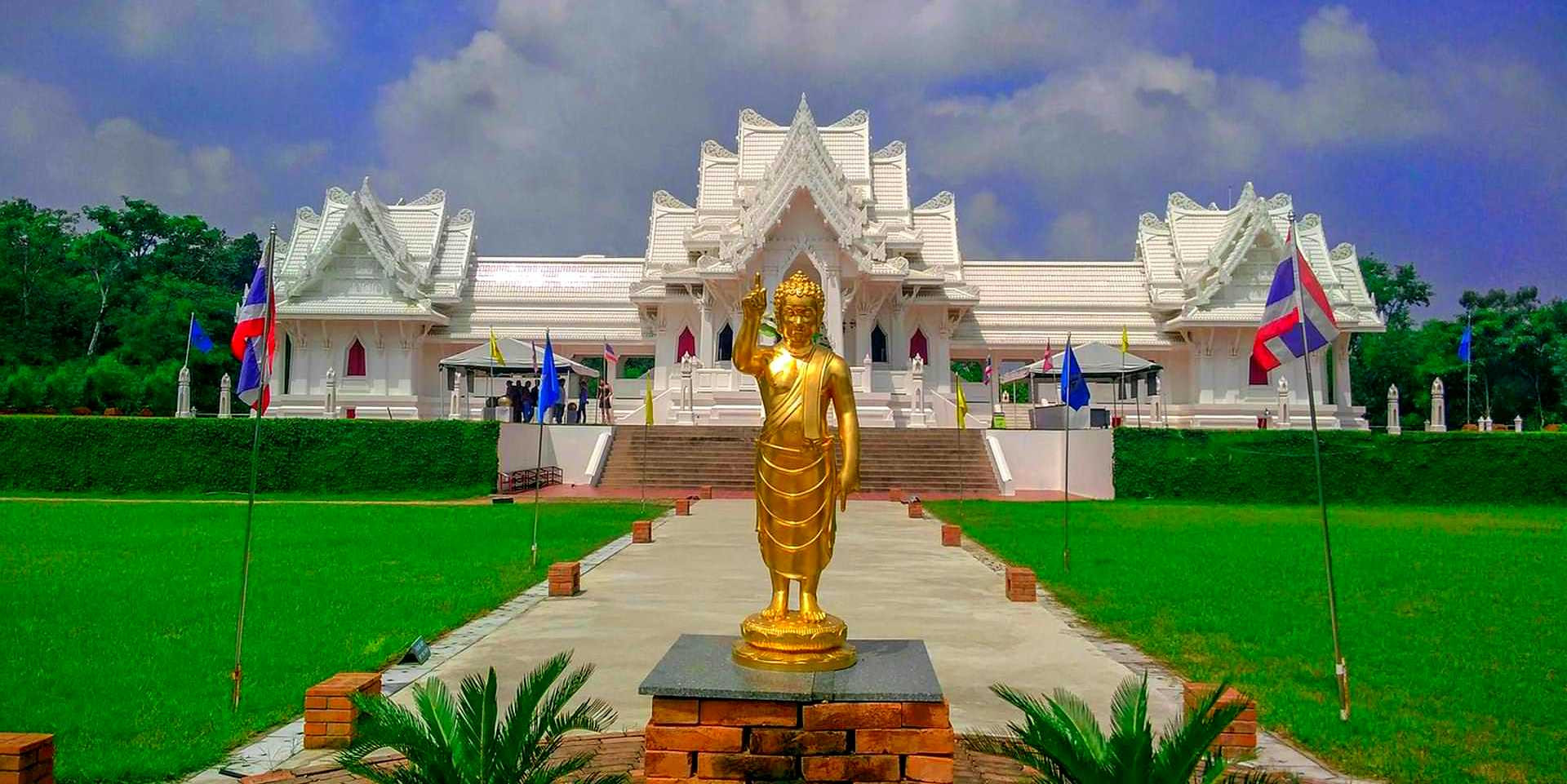Kopan Monastery
Kopan Monastery is a serene Tibetan Buddhist monastery located on the outskirts of Kathmandu, Nepal. Founded in 1969 by Lama Thubten Yeshe and Lama Zopa Rinpoche, it belongs to the Foundation for the Preservation of the Mahayana Tradition (FPMT), an international network of Gelugpa dharma centers, and has become a focal point for Buddhist learning, meditation, and spiritual practice.
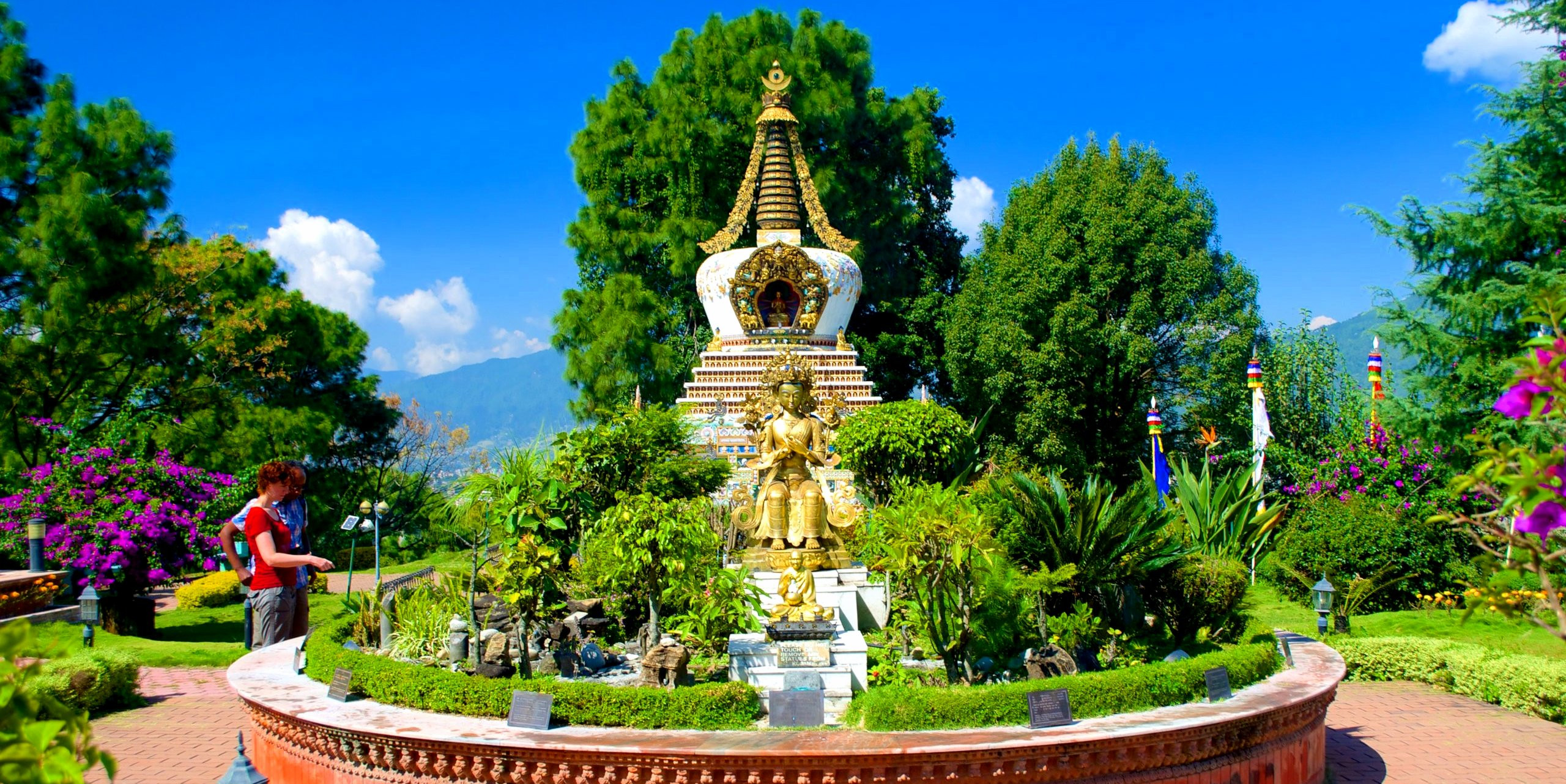
-
Location and Setting: Situated atop a hill north of Boudhanath, Kopan Monastery offers stunning views of the Kathmandu valley. The peaceful ambiance of the monastery is enhanced by its beautifully maintained gardens and prayer flags fluttering in the wind, making it a perfect retreat from the hustle and bustle of city life.
-
Educational and Spiritual Programs: Kopan is renowned for its educational programs that cater to both monks and laypersons. The monastery serves as a training ground for hundreds of monks originating from Nepal and Tibet. For lay visitors, Kopan offers structured meditation retreats and courses on Buddhist philosophy that range from introductory sessions to advanced teachings. These programs are designed to help individuals develop a deeper understanding of their minds, enhance their spiritual practice, and apply Buddhist teachings in daily life.
-
November Course: One of the highlights of Kopan Monastery’s annual events is the famous "November Course," a month-long intensive meditation and teachings course that attracts people from all over the world. This course provides an immersive experience in Tibetan Buddhist culture and philosophy, combined with meditation practices.
-
Community Services: Apart from its role as a spiritual center, Kopan Monastery is also actively involved in community services. It runs a school, the Kopan Monastic School, which provides secular and religious education to young monks. The monastery also engages in various social welfare activities, including healthcare services, educational scholarships, and community development projects in rural areas of Nepal.
-
Visit and Experience: Visitors to Kopan Monastery can stay in the monastery's guest house, which offers simple yet comfortable accommodations conducive to spiritual practice. The daily life of visitors can include participation in morning prayers, meditation sessions, and dharma talks, along with personal time for reflection and meditation in the monastery’s tranquil surroundings.
Kopan Monastery not only offers a unique opportunity to explore Buddhist teachings and meditation but also provides a peaceful sanctuary for spiritual growth and introspection, attracting thousands of visitors each year seeking spiritual renewal and a deeper connection with their inner selves.
Shechen Monastery
Shechen Monastery is a prominent center of the Nyingma tradition of Tibetan Buddhism located in Boudhanath, Kathmandu, Nepal. It serves as a major hub for the preservation and dissemination of the teachings and practices of this oldest school of Tibetan Buddhism, and is closely associated with one of its greatest 20th-century masters, Dilgo Khyentse Rinpoche.
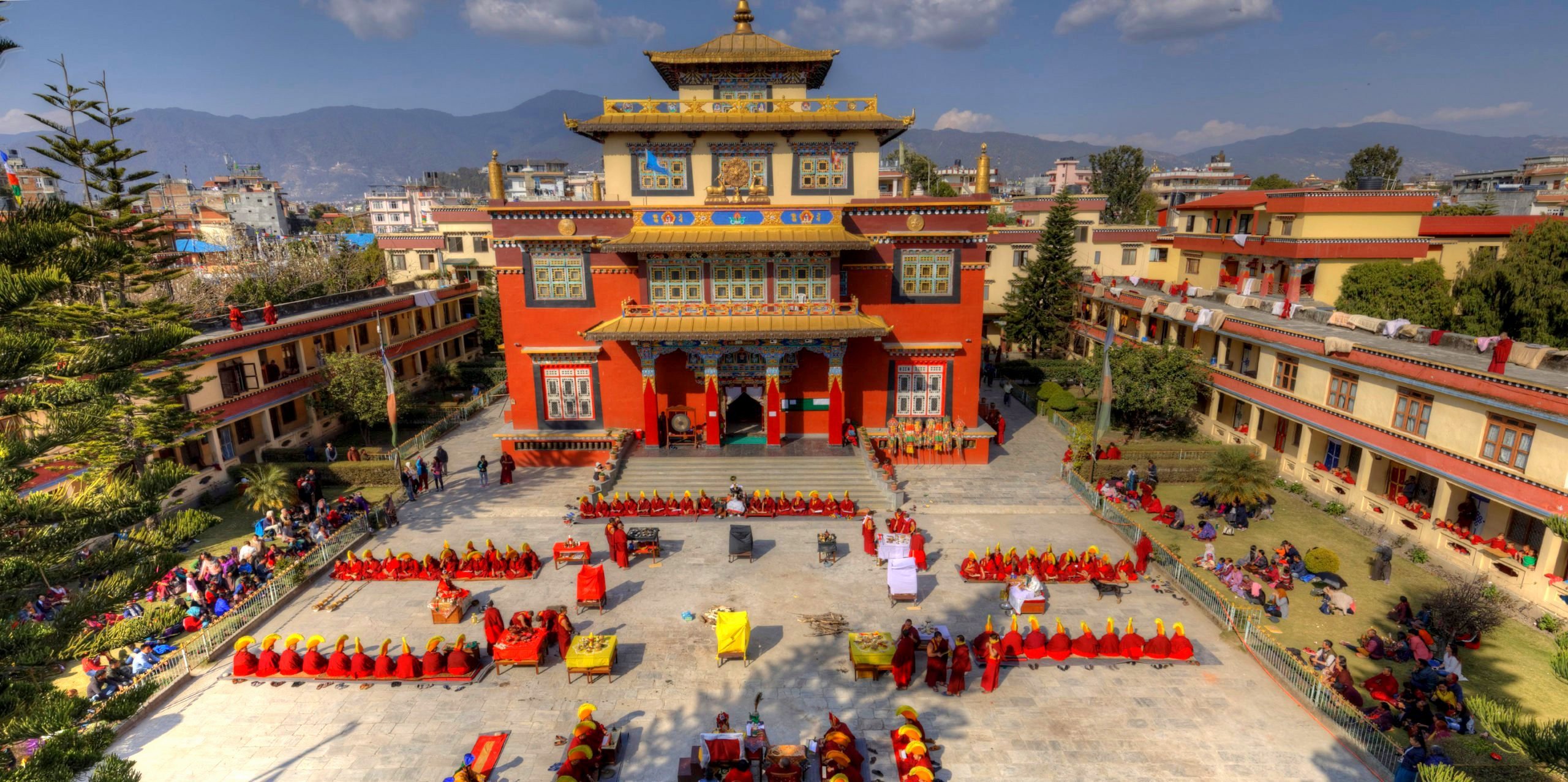
-
Historical Background: Originally established in Tibet, the original Shechen Monastery was destroyed during the Cultural Revolution. The current Shechen Monastery in Nepal was established by Dilgo Khyentse Rinpoche after he fled Tibet in 1959, seeking to continue and preserve the Nyingma teachings. Today, it stands as a testament to the resilience of the Tibetan Buddhist tradition and serves as a major center for learning, spiritual practice, and cultural preservation.
-
Architectural and Artistic Significance: Shechen Monastery in Nepal replicates the grandeur of its original Tibetan counterpart. The monastery is renowned for its exquisite murals and thangkas, which depict various aspects of Buddhist lore and cosmology. These artworks are not only beautiful but serve as instructional tools in the teachings of Buddhism. The monastery also houses a large collection of sacred Buddhist texts and relics.
-
Educational and Cultural Programs: Shechen Monastery operates a monastic school that provides traditional Buddhist education to young monks, encompassing both spiritual and secular subjects. The monastery is also known for its commitment to the promotion of Tibetan culture through music, dance, and art. The Shechen Rabjam Shedra, its educational institution, is recognized for producing scholars well-versed in Buddhist philosophy and meditation.
-
Spiritual Retreats and Festivals: The monastery offers various spiritual retreats that focus on meditation and the study of Buddhist texts, attracting students and practitioners from around the world. Additionally, Shechen hosts several religious festivals throughout the year, which are marked by elaborate rituals and ceremonies that draw large crowds of both locals and tourists.
-
Community Engagement: Shechen Monastery is actively involved in community welfare programs, including health services and educational projects. The monastery runs a clinic that provides free medical care to the monastic community and local residents. It also engages in outreach programs aimed at preserving the environment and promoting sustainable practices in the local community.
-
Visiting Shechen Monastery: Visitors to Shechen Monastery can explore its vast complex and experience its peaceful ambiance. Guided tours are often available, offering insights into the monastery’s history, art, and ongoing cultural practices. It's an enlightening experience for those interested in Buddhism or anyone seeking a deeper understanding of Nepal's rich spiritual heritage.
Shechen Monastery remains a vital institution in Kathmandu, preserving the depth and diversity of Buddhist traditions and offering a serene refuge for contemplation and spiritual growth.
Thyangboche Monastery
Thyangboche Monastery, also known as Tengboche Monastery, is one of the most famous and visually stunning monastic sites in Nepal. Nestled in the Khumbu region at an elevation of 3,867 meters (12,687 feet), it is not only a significant religious center for the Sherpa community but also a pivotal waypoint for trekkers en route to Mount Everest Base Camp.
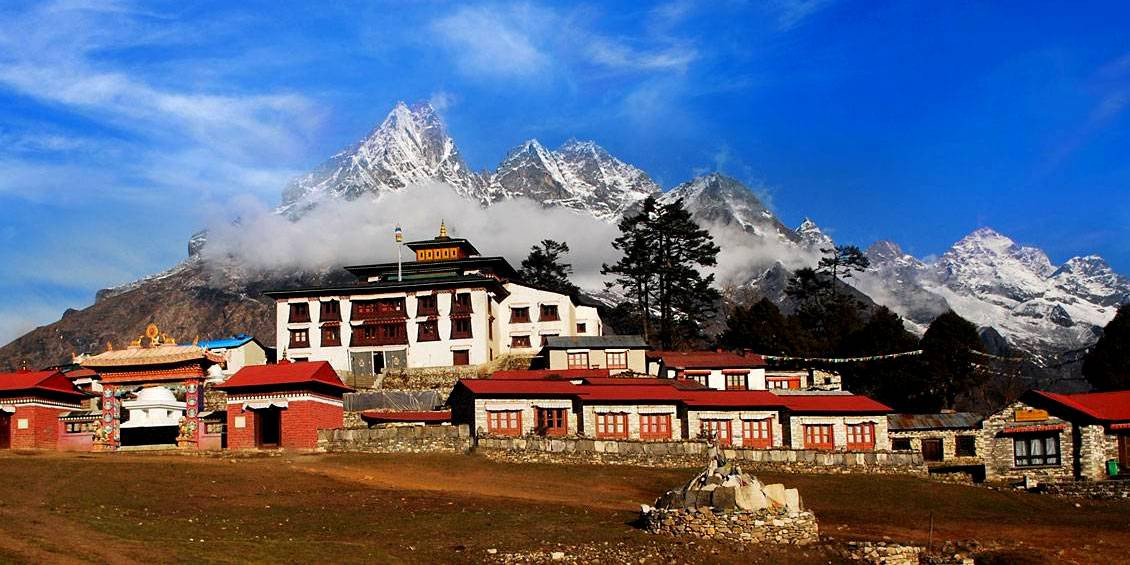
-
Spiritual and Cultural Hub: Founded in 1916 by Lama Gulu, Thyangboche Monastery has been rebuilt several times, most notably after fires in 1989 and 1991. The monastery belongs to the Nyingma sect of Tibetan Buddhism and is the largest gompa in the Khumbu region. It plays a crucial role in the spiritual life of the Himalayan Sherpas; it is here that many young Sherpas are trained as monks, and major decisions regarding the community are often blessed here.
-
Architectural and Scenic Grandeur: The monastery's architecture is a splendid example of Sherpa craftsmanship, featuring beautifully carved wood, vibrant murals, and elaborate decorations that reflect the richness of Himalayan Buddhist culture. Thyangboche is particularly famous for its panoramic views that encompass some of the world's highest peaks, including Mount Everest, Lhotse, Nuptse, and Ama Dablam, providing a breathtaking backdrop for meditation and spiritual contemplation.
-
Religious Festivals and Teachings: One of the highlights of visiting Thyangboche Monastery is experiencing the Mani Rimdu festival, which takes place usually in October-November. This 19-day series of sacred ceremonies and rituals culminates in a three-day public festival that is vibrant, colorful, and filled with religious dances (Cham dances), music, and a series of elaborate tantric rituals. The festival attracts hundreds of pilgrims and visitors from around the world, providing a profound insight into the living culture of Tibetan Buddhism.
-
Trekking and Tourism: Thyangboche Monastery is a cornerstone of trekking routes in the Everest region, making it accessible for travelers who are on their way to or from Everest Base Camp. The journey to Thyangboche itself is an integral part of the trekking experience in Nepal, offering opportunities for acclimatization, cultural immersion, and witnessing the daily lives of the Sherpa community.
-
Visitor Experience: Tourists and trekkers can visit the monastery to participate in daily puja (prayer ceremonies), enjoy the serene environment, and learn about Buddhist practices and the spiritual lifestyle of the monks who reside there. While there, visitors are expected to respect the religious and cultural sensibilities of the community, such as removing shoes before entering certain areas and avoiding intrusive photography during religious ceremonies.
Thyangboche Monastery remains not just a site of profound religious importance but also a beacon of peace and spirituality, set against some of the most dramatic and inspiring landscapes on Earth. It is a place where the spiritual and the earthly connect, making it a must-visit for anyone traveling through Nepal's Everest region.
Namobuddha Monastery
Namobuddha Monastery, also known as Thrangu Tashi Yangtse Monastery, is a significant and sacred Buddhist site located about 40 kilometers east of Kathmandu, Nepal. This monastery is deeply revered in the Buddhist community due to its association with a legendary act of compassion—one where a prince, in a former life of the Buddha, is said to have offered his body to a starving tigress to save her and her cubs.
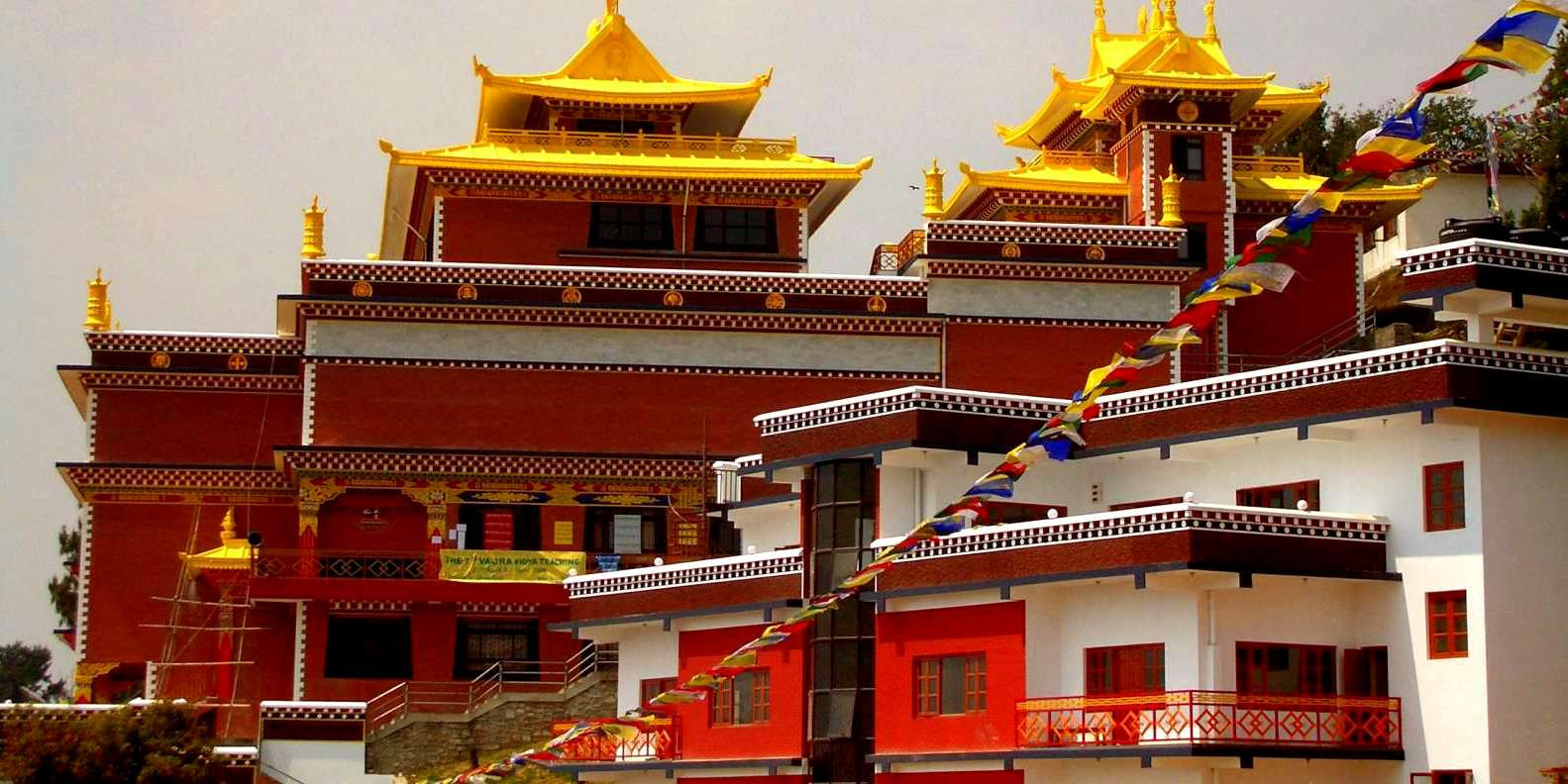
-
Spiritual Significance and Historical Background: According to legend, the prince, moved by the plight of the tigress, allowed her to consume him so that she could feed her young. This profound act of self-sacrifice is considered a testament to the Buddha's compassion and is commemorated at Namobuddha with a stone slab that marks the supposed spot of this sacrifice. The site has been a place of pilgrimage for centuries, attracting visitors not only from Nepal but from around the world.
-
Architectural and Cultural Features: Namobuddha Monastery is relatively modern, with construction completed in recent decades, yet it sits in a region steeped in ancient lore and spiritual tradition. The monastery is known for its beautiful design and exquisite artworks that include statues, thangkas, and murals depicting various aspects of Buddhist teachings. The main temple is an impressive structure, adorned with intricate carvings and surrounded by smaller stupas and meditation cells.
-
Activities and Environment: The monastery not only serves as a religious site but also operates as an educational center, offering courses in Buddhist philosophy, meditation, and Tibetan language, catering to both monks and lay students. The environment around Namobuddha is serene and picturesque, characterized by rolling hills and traditional Nepalese villages, making it an ideal spot for meditation and retreats.
-
Festivals and Community Engagement: Namobuddha hosts several festivals and special events throughout the year, which are celebrated with great fervor. These include special prayer ceremonies and public teachings that are attended by thousands of devotees. The monastery is also involved in various social welfare activities, including running a school for local children and providing medical camps to the underprivileged.
-
Visiting Namobuddha: Visitors to Namobuddha Monastery can engage in a variety of activities, from participating in guided meditation sessions to attending the daily pujas. There are also facilities for longer stays, where visitors can deeply immerse themselves in the monastic lifestyle and practice. The monastery offers a peaceful refuge from the busyness of daily life, allowing individuals to reconnect with nature and spirituality.
Namobuddha is not only a destination for those interested in Buddhism but also for anyone seeking peace and introspection. Its breathtaking natural scenery combined with its rich spiritual heritage makes it one of the most cherished religious sites in Nepal.
Swayambhunath Monastery
Swayambhunath Monastery, affectionately known as the "Monkey Temple," is one of the most iconic and revered spiritual sites in Kathmandu, Nepal. Perched atop a hill in the Kathmandu Valley, this ancient religious complex is a significant center of Buddhism, attracting thousands of pilgrims and tourists each year. Its name, Swayambhunath, means "self-arisen" or "self-sprung," which reflects the traditional belief that the hill itself sprang up spontaneously from a primordial lake that once covered the area.
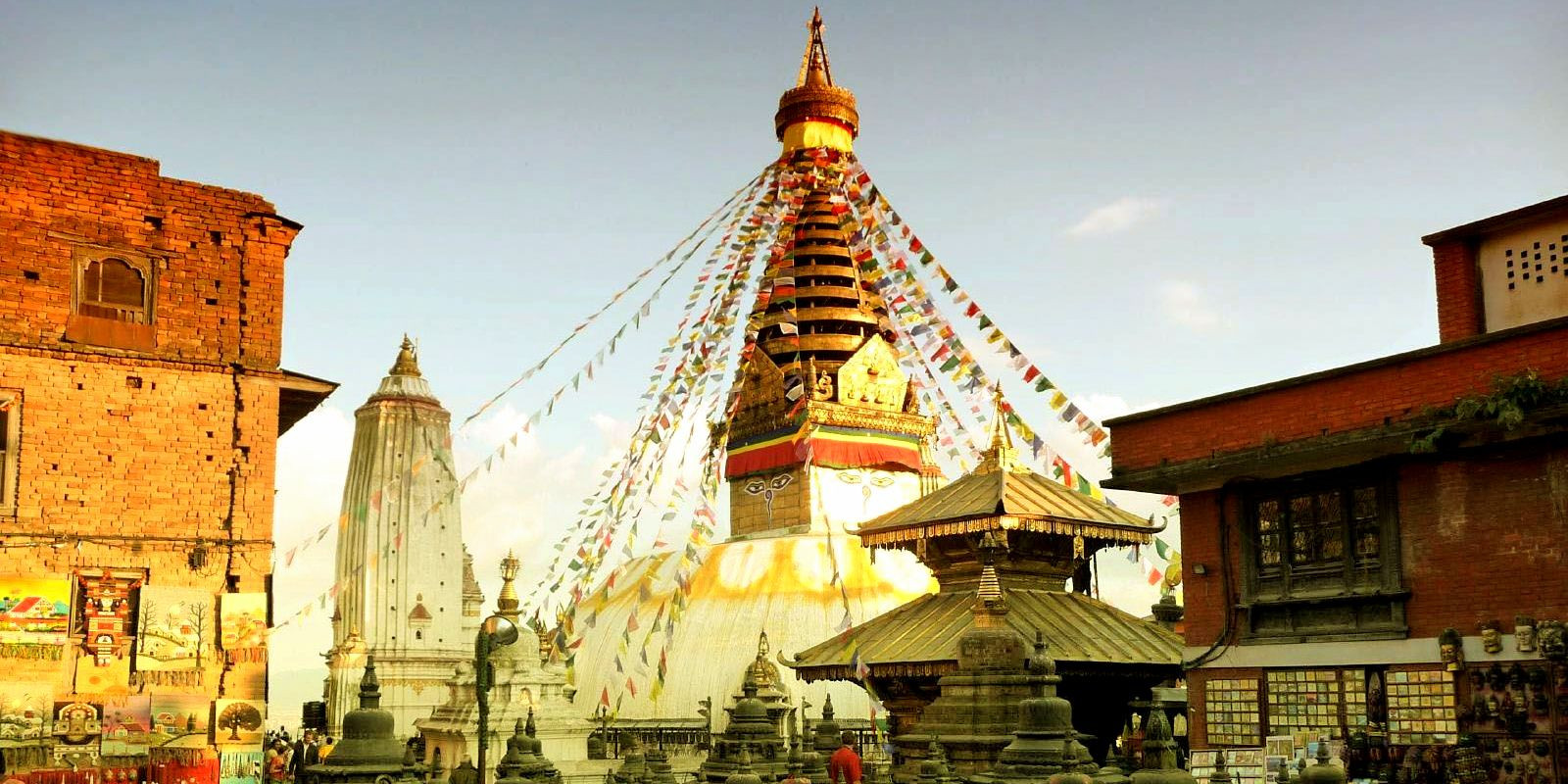
-
Historical and Cultural Significance: Swayambhunath is among the oldest religious sites in Nepal, with origins that date back to the 5th century or earlier. According to legend, the stupa was founded by the great-grandfather of King Mānadeva (464-505 CE), making it a cornerstone of the valley’s religious landscape. This UNESCO World Heritage Site is a splendid example of religious harmony, featuring elements of both Buddhism and Hinduism, which is reflected in the variety of shrines and statues within the complex.
-
Architectural Marvel: The architecture of Swayambhunath is highly symbolic, centered around a large white dome topped with a golden spire. Painted on the four sides of the spire are the all-seeing eyes of Buddha, looking out across the four cardinal directions. The dome represents the earth, and the thirteen tiers of the spire symbolize the stages that a human being must pass through to achieve nirvana. The complex is also adorned with numerous shrines, chaityas, temples, and Tibetan monasteries, making it a rich tapestry of architectural styles.
-
Daily Rituals and Festivals: Swayambhunath is a living center of faith and daily worship. Each morning before dawn, devotees ascend the 365 steps that lead to the temple to perform rituals and offer prayers. The site is particularly vibrant during Buddhist festivals such as Buddha Jayanti (the birthday of Buddha) and Losar (Tibetan New Year), where traditional dances, music, and religious ceremonies take place.
-
The Monkeys of Swayambhunath: A distinctive feature of the temple complex is the large troop of monkeys that reside here, which is why it’s more commonly known as the Monkey Temple. These monkeys are considered holy to the devotees of the temple, believed to be the protectors of the temple and the embodiment of Hanuman, the monkey god of the Ramayana.
-
Visitor Experience: For tourists, Swayambhunath offers not just a peek into the spiritual practices of Nepal but also panoramic views of Kathmandu. The atmosphere is thick with the scent of incense and the sounds of ringing bells and chanting, providing a profound sense of peace and timelessness. Guides are available to explain the iconography and rituals observed at the site, enriching the visitor experience with deeper insights into Nepalese culture and spirituality.
Swayambhunath Monastery remains a beacon of spirituality and heritage, drawing those who seek a deeper understanding of Nepal’s religious traditions and those who simply wish to experience the tranquility and beauty of this ancient site.
Maratika Monastery
Maratika Monastery, also known as Halesi Mahadev Temple in local traditions, holds a unique position in both Hindu and Buddhist religious practices. It is located in the Khotang District of Eastern Nepal, set within a complex of caves that are steeped in ancient lore and spiritual significance. This sacred site is particularly revered in Tibetan Buddhism for its association with Padmasambhava (Guru Rinpoche) and his quest for immortality.
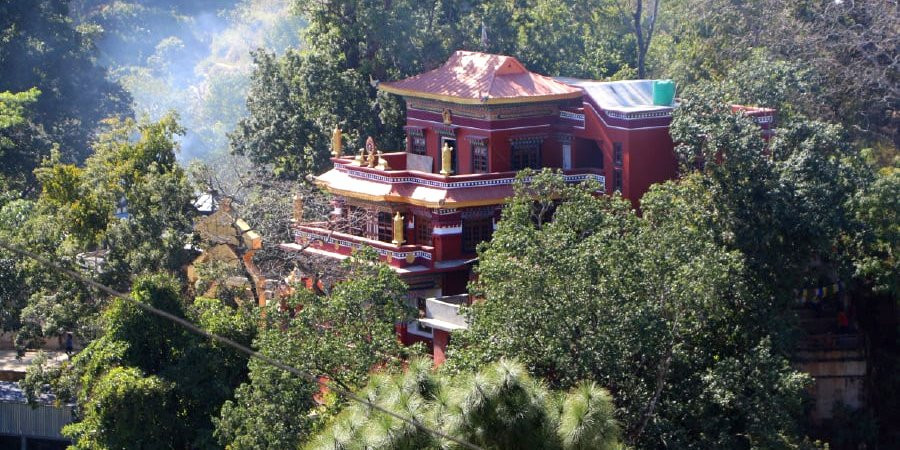
-
Historical and Spiritual Significance: According to Buddhist tradition, it was in the Maratika caves that Guru Rinpoche, along with the Dakini Mandarava, achieved the state of immortality through the practice of long-life Vajrayana rituals. These events are considered key milestones in the Nyingma school of Tibetan Buddhism, making Maratika one of the few places on earth where evidence of such profound spiritual attainments is believed to exist. The site is thus a major pilgrimage destination for practitioners seeking blessings for longevity and spiritual realization.
-
The Caves and Temples: The Maratika Monastery comprises several caves, with the most significant being the Cave of Immortality. Inside, the cave features naturally occurring symbols and images that are revered as sacred manifestations of the deities and spiritual icons like the self-arisen Buddha and long-life vase. The temple complex surrounding the caves has been developed to facilitate religious practices and accommodate the influx of pilgrims, yet it retains a profound sense of ancient tranquility.
-
Pilgrimage and Practices: Pilgrims from all over the world, especially from Tibetan regions, visit Maratika to perform specific rituals and meditation practices associated with longevity and the realization of Amitayus, the Buddha of Long Life. The pilgrimage is often marked by ceremonies and continuous recitations of mantras, with the belief that such practices in this holy site will amplify the spiritual benefits and efficacy of the prayers.
-
Festivals and Community Engagement: Annually, the Maratika Monastery hosts various religious festivals, attracting thousands of devotees. One of the prominent events celebrated here is the "Maratika Festival," which occurs around February/March and involves extensive rituals to honor Guru Rinpoche’s achievements at Maratika. The monastery plays an active role in the local community, providing spiritual guidance and support, and participating in local development and conservation efforts.
-
Visiting Maratika: The journey to Maratika is as challenging as it is rewarding, involving remote trails that pass through scenic landscapes and rustic villages. For those able to make the pilgrimage, the experience is often described as life-changing, providing not only a deep dive into spiritual practices but also a connection to the natural and mystical energies of the sacred caves.
Maratika Monastery continues to be a beacon of spiritual heritage, offering insights into ancient practices of Tibetan Buddhism and serving as a testament to the deep-seated spirituality that pervades Nepal's cultural and natural landscapes. Visitors leave with a sense of peace and renewed spiritual vigour, making Maratika a truly unique destination in the world of spiritual travel.
Pharping Monastery
Pharping Monastery, nestled in the verdant hills south of Kathmandu, is a significant site for Tibetan Buddhism, revered as the place where Guru Padmasambhava (also known as Guru Rinpoche) attained enlightenment. This area, rich in religious history and spiritual energy, is often regarded as the second-most sacred place in Nepal after Lumbini, the birthplace of Buddha.
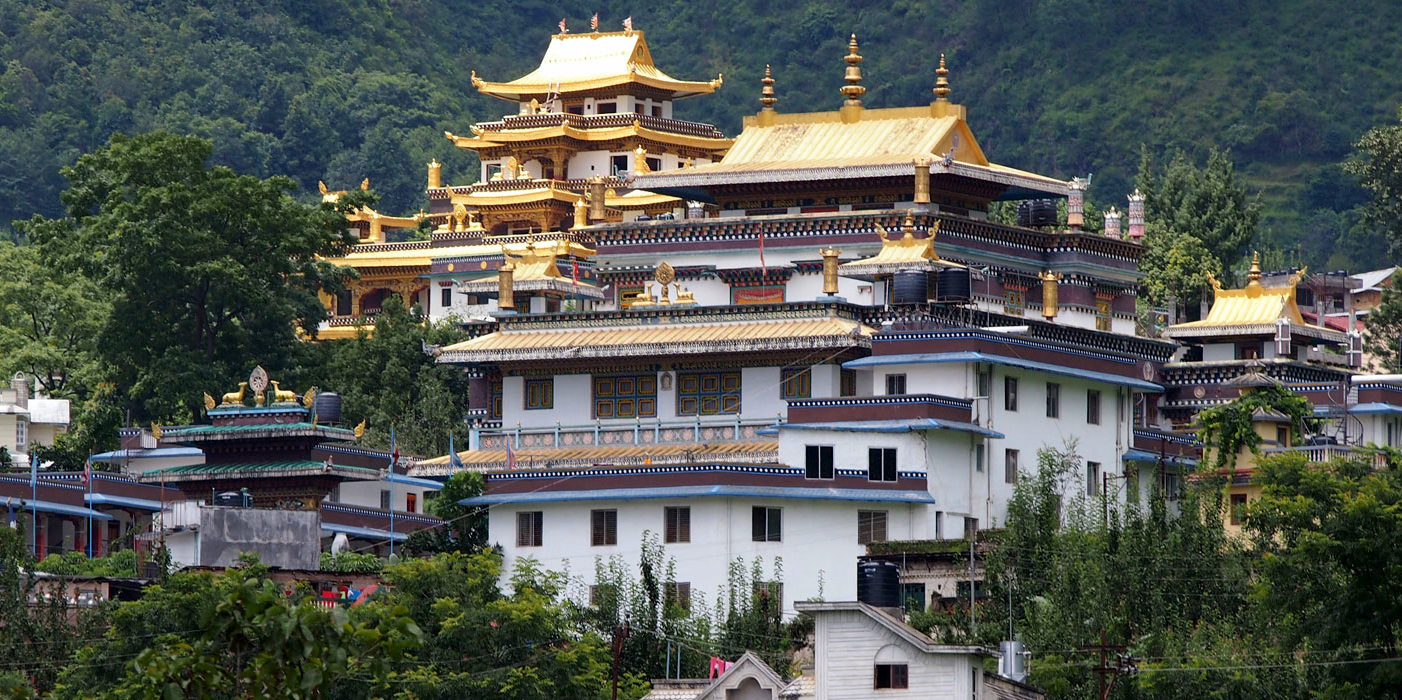
-
Spiritual Significance and Historical Context: Pharping is said to embody the energy and power of Yang Le-shod, the sacred site where Guru Rinpoche achieved the Mahamudra Siddhi, the ultimate realization. The region is dotted with numerous caves and shrines dedicated to this revered figure, including the famous Asura Cave, where Guru Rinpoche meditated intensively. These sites make Pharping a pivotal location for those following Vajrayana Buddhism and seeking a deeper understanding of its practices.
-
Monastic Life and Educational Centers: Pharping hosts a diverse array of monastic institutions, reflecting various Tibetan Buddhist traditions. These monasteries serve not only as centers for religious worship and pilgrimage but also as institutions for Buddhist education and practice. They offer teachings and training to both monastic residents and lay practitioners, encompassing a wide range of Buddhist philosophies and meditation techniques.
-
The Asura Cave and Yangleshö: The Asura Cave, also known as Yangleshö, is particularly important. Pilgrims visiting this cave can see where Guru Rinpoche left his handprint in the rock, a powerful testament to his spiritual achievements. The cave, often filled with butter lamps and colorful prayer flags, resonates with a profound sense of peace and timeless devotion. Nearby, the monastic complex includes shrines, stupas, and prayer wheels, enriching the spiritual atmosphere and providing visitors with multiple avenues for reflection and worship.
-
Community and Cultural Contributions: Beyond its religious functions, Pharping’s monastic community is deeply involved in the local and broader community. These monasteries engage in social welfare activities, including education for underprivileged children, healthcare services, and environmental conservation initiatives. They are also key players in preserving and promoting Tibetan culture, language, and religious traditions, hosting festivals, rituals, and ceremonies that are open to both locals and tourists.
-
Visiting Pharping: For visitors, Pharping offers a unique opportunity to experience the vibrancy of Tibetan Buddhist culture amidst the natural beauty of Nepal. The journey to Pharping is an escape from the hustle and bustle of Kathmandu and a step into a world where spiritual history permeates the landscape. Tourists can participate in guided meditation, attend teachings, or simply soak in the tranquil environment and the hospitality of the monastic community.
Pharping is not just a destination; it's a profound encounter with spirituality and tradition, offering insights and experiences that resonate with the hearts of those on a spiritual quest. The area invites visitors to explore its sacred sites and engage with its rich tapestry of Buddhist teachings, making it a cornerstone of spiritual tourism in Nepal.
Lumbini Monastic Site
Lumbini Monastic Site, located in the Rupandehi District of Nepal, is universally celebrated as the birthplace of Lord Buddha, Siddhartha Gautama, making it one of the most revered spiritual sites in the world. This UNESCO World Heritage Site is not only a focal point for Buddhist pilgrims but also a symbol of peace and spiritual awakening for people across the globe.
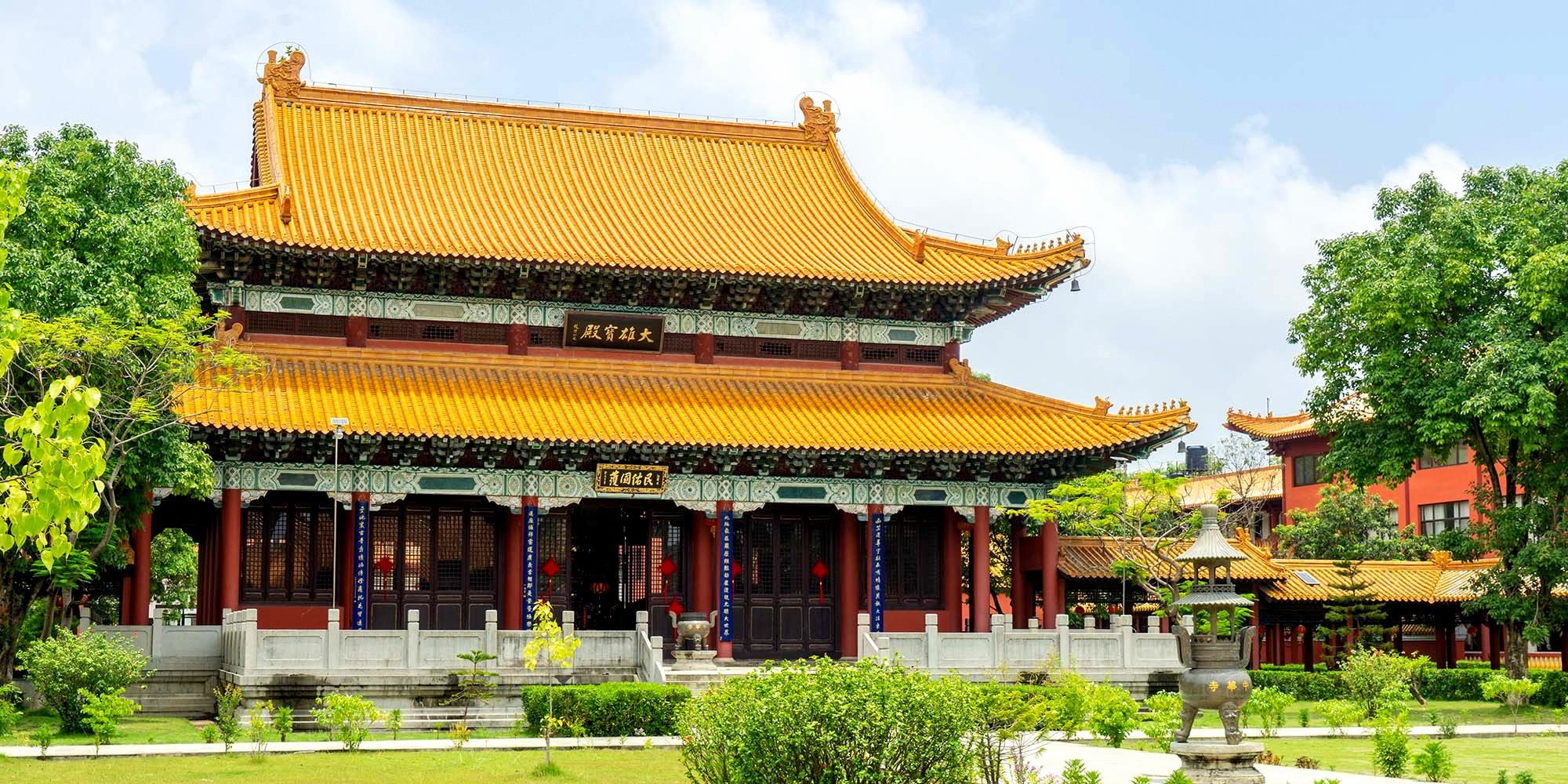
-
Historical and Spiritual Significance: Lumbini is where Queen Mayadevi gave birth to Siddhartha Gautama around 563 BCE. The site is marked by the Mayadevi Temple, which houses the ancient stone relief depicting the birth scene of the Buddha and the exact spot marked by the Ashoka Pillar, erected by Emperor Ashoka in 249 BCE to commemorate his pilgrimage to the holy site. These ancient artifacts link Lumbini directly to the life of the Buddha and his journey of enlightenment.
-
Architectural and Cultural Diversity: The Lumbini Monastic Site encompasses a large area designated for monastic communities and includes over 25 Buddhist monasteries built by different countries from around the world, each reflecting the architectural style and spiritual traditions of their respective cultures. This international representation includes monasteries from Myanmar, China, Germany, France, and more, each offering a unique perspective on Buddhist architecture and art.
-
The Lumbini Development Zone: The area around Lumbini is divided into several zones: the Sacred Garden (where the Mayadevi Temple is located), the Monastic Zone, and the New Lumbini Village. The Monastic Zone is set aside exclusively for monastic buildings and stupas, ensuring a tranquil environment for meditation and spiritual activities. The master plan for the development of Lumbini, designed by the renowned architect Kenzo Tange, emphasizes sustainability and preservation of the sacred nature of the site while allowing space for pilgrims and visitors.
-
Spiritual Activities and Festivals: Lumbini is active year-round with various spiritual activities, including meditation, prayers, teachings, and retreats conducted by the resident monastic communities. Major Buddhist festivals such as Buddha Jayanti (the Buddha's birthday), Vesak (marking the Enlightenment and Parinirvana of Buddha), and numerous other local and international celebrations are held here, drawing thousands of devotees and adding to the site's vibrant spiritual life.
-
Visitor Experience: Visitors to Lumbini can explore the extensive grounds, which include the Sacred Garden, various monasteries, meditation centers, and the Lumbini International Research Institute, which offers resources and seminars on Buddhism. The peaceful atmosphere is enhanced by rows of prayer flags, manicured gardens, and reflective ponds, making Lumbini not just a tourist destination but a place for deep spiritual renewal and connection.
Lumbini Monastic Site stands as a beacon of peace and spirituality, inviting all who visit to delve into the teachings of Buddha and experience the profound tranquility that the site offers. It is a must-visit for anyone interested in the origins of Buddhism, spiritual history, or the pursuit of peace.
Rules and Regulations for Top Monasteries in Nepal
When visiting the top monasteries in Nepal, it's important to adhere to certain rules and regulations to ensure a respectful and enriching experience. These guidelines help maintain the sanctity and spiritual atmosphere of these revered places. Here’s an overview of common rules and etiquette to follow:
General Conduct
-
Dress Modestly: Wear clothing that covers shoulders and knees. Scarves or shawls may be required to enter certain areas.
-
Remove Shoes: You will often need to remove your shoes before entering temple areas or certain parts of the monasteries.
-
Quiet and Respectful Behavior: Speak in soft tones and avoid loud noises. These are places of worship and meditation.
-
No Public Displays of Affection: As a sign of respect, avoid overt displays of affection such as hugging or kissing.
Photography and Technology
-
Restrictions on Photography: Always ask for permission before taking photos, especially inside the temples or of the monks. Some areas may prohibit photography altogether.
-
Turn Off Mobile Phones: Either switch off or silence mobile phones to avoid disturbing the peace.
Interaction with Monks and Nuns
-
Respect Monks and Nuns: Do not touch monks or nuns, and always give them space to pass. It is also customary to let them initiate any handshake.
-
Giving and Receiving: When offering or receiving something from a monk or nun, use both hands as a sign of respect.
Participation in Rituals
-
Follow Local Customs: Observe and follow the local customs during any ritual or ceremony, especially if you are invited to participate.
-
Permission to Participate: In some cases, certain rituals may be closed to tourists or non-practitioners. Always ask for permission before joining.
Environmental Considerations
-
No Littering: Keep the surroundings clean. Do not litter and use designated trash bins for waste disposal.
-
Preserve the Sanctity: Avoid picking flowers, damaging plants, or disturbing any wildlife within and around the monastery grounds.
Donations
- Donating Respectfully: If you choose to donate, look for donation boxes or ask the monastery office how best to contribute. These donations help in the upkeep of the monasteries and support the monks and nuns.
By following these guidelines, visitors can ensure their visit is respectful and conducive to the spiritual and cultural ethos of Nepalese monasteries, contributing to a meaningful and memorable experience.
Visiting the top monasteries in Nepal is a deeply enriching experience that offers insight into the spiritual, cultural, and natural beauty of the Himalayas. From the serene Kopan Monastery to the historic depths of Lumbini, each site provides a unique glimpse into Buddhist traditions and practices. These monasteries are not just destinations but are vibrant centers of learning and reflection where ancient rituals and the breathtaking environment foster a profound connection with spirituality. A journey to these sacred sites is a pilgrimage that encourages introspection and offers a peace that resonates with the soul, making every visit both memorable and transformative.
FAQs for Top Monasteries in Nepal
Q: What is the best time of year to visit the monasteries in Nepal?
A: The ideal times are during the spring (March to May) and autumn (September to November) when the weather is clear and conducive for travel. Many cultural festivals also occur during these seasons, enhancing the visitor experience.
Q: Do I need to pay an entrance fee to visit the monasteries?
A: Some monasteries might require a small entrance fee for maintenance and preservation purposes. This is more common if the monastery includes a museum or is part of a larger heritage site.
Q: Are there specific dress codes for visiting monasteries in Nepal?
A: Yes, visitors should dress modestly, covering shoulders and knees. Shorts, short skirts, and sleeveless tops should be avoided.
Q: Can I take photos inside the monasteries?
A: Photography policies vary. Some monasteries allow it in certain areas but not inside prayer halls. Always check for signs or ask permission before taking photos.
Q: How should I behave when visiting a monastery?
A: Maintain a quiet and respectful demeanor, speak softly, and ensure your mobile phone is silent. Follow local customs such as circumambulating religious artifacts in a clockwise direction.
Q: Can I participate in the rituals or prayers?
A: Participation is typically for practitioners or those in organized programs, but observing rituals and prayers is usually permitted. Always verify with the monastery what is allowed.
Q: What should I do if I want to speak with a monk or nun?
A: Wait for them to offer attention, address them respectfully, and avoid initiating physical contact.
Q: Is it acceptable to bring offerings?
A: Yes, offerings like incense, flowers, or monetary donations are common and appreciated. Use designated donation boxes or ask where to leave offerings.
Q: Can I stay overnight at any of the monasteries?
A: Some monasteries provide accommodations, especially for longer retreats. Arrange these stays well in advance through the monastery’s administration.
Q: Are there any health considerations I should be aware of?
A: Be cautious of altitude sickness at high-altitude monasteries. Stay hydrated and allow time for acclimatization.
For the Nepal tour, please click here.
If you are looking for different kinds of Nepal Tours or Trekking Packages, feel free to contact us.
